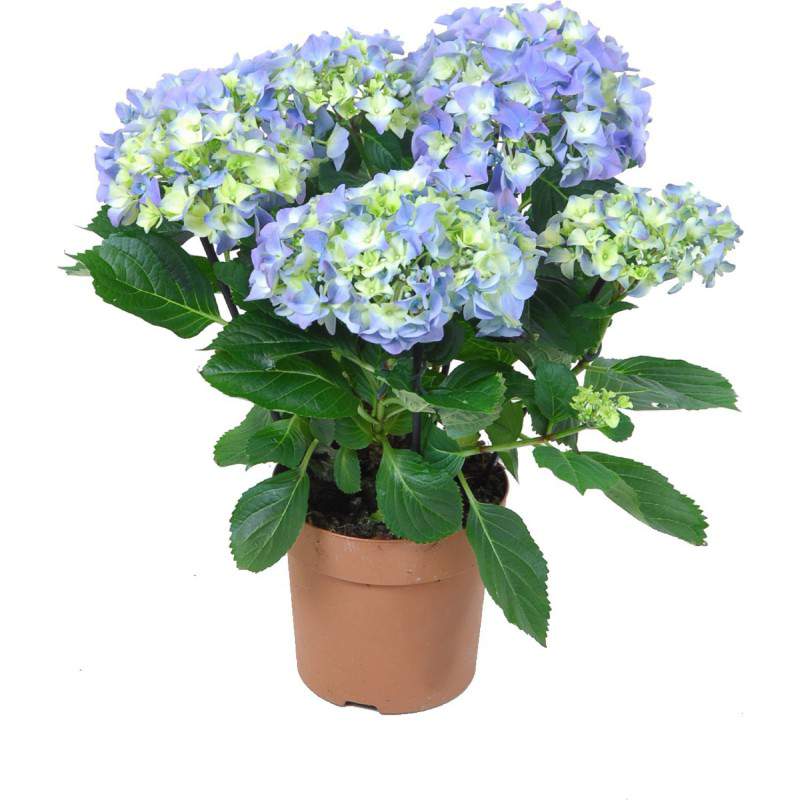








Reference: BL-53410849C
 PACKAGING AND SHIPPING COSTS
PACKAGING AND SHIPPING COSTShydrangea is an ornamental plant that is grown in many varieties. Hydrangea is part of the Hydrangeaceae family, Hydrangea genus. A plain with a romantic look, in bright colors, capable of giving new life to a garden or terrace. A plant that is also appreciated in apartments.
Hydrangea Flowerpot 10-13 cm.
Silvano version 2020, no-drill window box holder, the only one patented windowbox planter holder easy and safe to place outside the windowsill. It is adjustable in two different heights, low if used for windows openings towards the outside, flat for those who can have plants at windowsill height.
Does not obstruct the opening of blackout blinds or windows.
Color: White and Anthracite
Modern design product for interiors, gardens or terraces. Robust and suitable for all weather conditions.
Hydrangea vase 10 cm in diameter. available in various colors (ask for any preferences when ordering).
Hydrangea is widespread, the credit also goes to cultivation that is not particularly difficult. These are plants that have a good rusticity that do not suffer too much from any "less than optimal" conditions. If you want to achieve a good result, however, you must follow the instructions for growing these plants
Ground
Hydrangeas prefer an acidic soil however they also grow in alkaline and neutral soils. The soil must be moist and placed in a cool and shady area
Color ratio of flowers and soil type
In order to avoid blooms with flowers of unspecified or not very beautiful colors, it is essential to carefully evaluate the varieties to be inserted: if you have a substrate it is neutral or alkaline, it is better to opt for pink or red or white cultivars. If you want blue hydrangeas, acidic soil is essential. In this case it is also possible to intervene with bluing agents based on aluminum salts to make the color even more beautiful.
The different varieties, in turn, change according to the soil in which they are placed.
The pink-flowered varieties if grown in acidic soils (pH 4.5) become blue and the blue-flowered varieties turn pink in alkaline soils (pH 7.5 and above). When the values are intermediate (between pH 4.5 and 7.5) the color will have intermediate shades from intense blue, to light blue, to blue, to pink, to intense pink.
If you want to obtain the blue color starting from the pink cultivars to obtain blue flowers you have to make the aluminum loam and a fertilization rich in K2O and poor in P2O5 which causes the precipitation of aluminum phosphates. About 5-7 irrigations are needed from July to September with 5-10 gr of aluminum sulphate per liter of water.
watering
Frequent irrigation is essential to obtain beautiful hydrangeas in particular during the summer. If there is no rainfall from June onwards, it is advisable to water the plant with 7-8 liters of water.
Exposure
hydrangeas prefer to be exposed to partial shade. The ideal location on our peninsula is sunny in the morning and shaded in the afternoon. Exposure in full sun is tolerated only in mountain areas otherwise it is good to place them in bright shade.
Composting
To guarantee a rich flowering it is advisable to sprinkle starting from March a good slow release fertilizer for acidophilic plants. In the case of neutral or alkaline soil it is appropriate, from the end of winter, to spread on the ground or mix with the water of the water, products based on iron sulphate
Flowering
The hydrangea remains bare during the winter and has revived since early March. Flowering occurs in April and in the apartment it can last even 6-8 weeks, as long as the placement takes place in a sufficiently bright place with non-direct exposure to sunlight, rather cool, at a temperature that reaches a maximum of 16-18 ° C that it is watered abundantly.
In the apartment, even if all the necessary precautions are taken, it is not easy to revive the hydrangea for several years in a row. You can therefore transplant it in the garden or in a sufficiently large planter on the terrace, this at the moment when the plant will begin to fade, generally after 2-3 weeks, if the optimal conditions are not respected.
The hydrangea flowers are gathered in spherical inflorescences, called corymbs or panicles, with flowers for the most part sterile, in particular the external ones, for which they are replaced by sepals, large and petal-like, while the other floral parts are aborted. The inflorescences of hydrangeas blow different colors, ranging from white to different shades of red, from pink to mauve, from blue to violet. The factors that determine the colors are the genetic heritage of the plant (some varieties are exclusively red or pink) and the type of soil where they are grown: in acid reaction soils the coloring is blue-violet, while in alkaline soils they are pink or lilac .
Multiplication
You can proceed in two ways to multiply the hydrangea: through gamic reproduction via seed or through agamic reproduction with cutting. To obtain a cutting of hydrangeas, it is necessary to take a portion of the branch of 10-15 cm with at least two buds from the plant.
For the hydrangea cutting it is necessary to choose a branch that has not bloomed because it has more chance to take root. Then the branch is cut and placed in an acidophilic soil choosing an area with a good shade, moist and cool. the soil in the first period must be kept humid paying attention to excessive water stagnations.